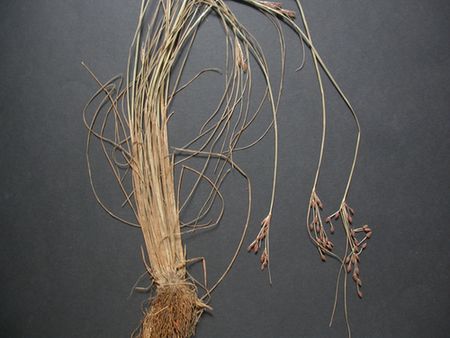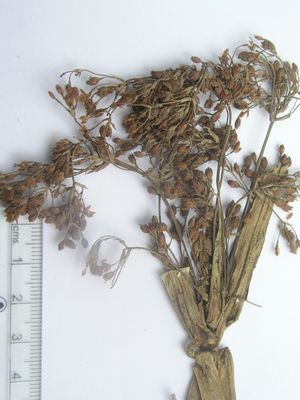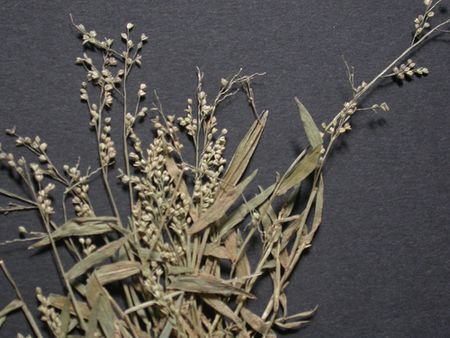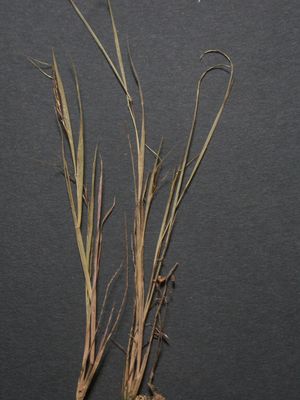| G.R. Rao [grao@ces.iisc.ac.in] |
D.K. Mesta [diwakarmesta@gmail.com] |
M.D. Subash Chandran [mds@ces.iisc.ac.in] |
T.V. Ramachandra* [cestvr@ces.iisc.ac.in] |
Abstract
Two sedges Fimbristylis pubisquama Kern and Schoenoplectus grossus (L. f.) Palla, and two grasses Isachne pulchella Roth ex R. & S Dimeria avenacea (Retz.) C. Fisher are reported from Uttara Kannada district part of Central Western Ghats. These with detailed description are given. The flora of Uttara Kannada hosts large number of endemic and interesting plant species. Recent discoveries of sedges, grasses and two critically endangered tree species highlights the need for making intensive efforts for locating, documenting and conservation of such species
Introduction
Uttara Kannada district of Karnataka State lies between 740 9’ to 750 10’ E and 130 55’ to 150 31’ N and extends over an area of 10,327 sq km. It is one of the three coastal districts of the state alongside the Arabian Sea. Many have surveyed and prepared floras for sedges and grasses for different regions of Karnataka and India (Cooke, 1903; Bhat & Nagendran, 2001; Sreekumar & Nair, 1991; Cook, 1996). Recently more species were added to the list of Karnataka flora (Udayan et al, 2004; Ravikumar et al., 2005). The flora of Uttara Kannada hosts large number of endemic and interesting plant species. Recent discovery of two critically endangered tree species highlights the need for making intensive efforts for locating, documenting and conservation of such species (Krishnakumar & Shenoy, 2006; Chandran et.al., 2008). Two species of sedges and two of grasses that we came across in the district in the course of our ecological studies, later identified to be new reports to Karnataka state is being described here.
Fimbristylis pubisquama Kern in Blumea 8:131. 1955. F.compressa Boeck. in Lannaea 38 : 387. 1874. non Roem. & Schult.; Clarke in Hook. f. Fl. Brit. Ind. 6: 639. 1893.
(CYPERACEAE)
Annuals with golden yellow roots and densely tufted culms which are obtusely 3-sided attaining 45 cm height. Leaves 2-5, basal. Inflorescence simple or compound, corymbose. Primary rays 3-7. Spikelets ovoid-ellipsoid, deep rusty brown, 0.7 cm long, wholly pubescent; hairs towards tip of glume darker; ciliate on margins. Stamens 2. Styles flat, 2-cleft, sparsely hairy above, stigma shorter than style. Nuts biconvex, obovoid, hexagonal cells on either face, yellowish brown.
Flowering & Fruiting: Aug-Sep
Habitat: Coastal marshes.
Specimen examined: Uttara Kannada: Karwar, 05.09.06, G.R.Rao 1013 (Herbarium, C.E.S field station, Indian Institute of Science, Kumta).

Figure 1: Fimbristylis pubisquama habit
Schoenoplectus grossus(L. f.) Palla in Allg. Bot. Zeit. 17; Beibl. 3. 1911; T.Koyama in Dassan. & Fosb. Rev. Handb. Fl. Ceylon 5: 154, f. 6. 1985. Scirpus grossus L. f. Suppl. 104. 1781; C. B. Cl. in Hook. Fl. Brit. India 6: 659. 1893; Cooke, Fl. Pres. Bombay 3: 408. 1958 (Repr. ed); Kern in Steenis, Fl. Males. 1, 7: 498, f. 22. 1974. S. kysoor Roxb. Fl. Ind. 1: 230. 1832; Cooke, op. cit. 409. S.grossus var. kysoor (Roxb.) C. B. Cl. in Hook. f. op. cit. 660. (CYPERACEAE)
Perennials with culms corm like at the base, sharply 3-angled, the faces concave smooth. Leaves few to a culm, linear, mostly equaling the culm. Inflorescence a large terminal corymb with primary, secondary and tertiary rays. Spikelets solitary, the terminal ones sessile, the rest pedicellate, ellipsoid, 0.5-0.7 cm long, 0.35-0.4 cm in diameter, many flowered, light brown to rusty coloured. Glumes boat shaped, 0.2-0.3 cm long, 0.2-0.25 cm wide, rusty-brown, ciliate along margins. Stamens 3. Nuts somewhat flattened, broadly obovate, yellowish-brown.
Flowering & Fruiting: September-December
Habitat: Shallow fresh water marshes.
Specimen examined: Uttara Kannada: Mundgod, 06.01.06, G.R.Rao 1024 (Herbarium, C.E.S field station, Indian Institute of Science, Kumta).

Figure 2: Schoenoplectus grossus inflorescence
Isachne pulchella Roth ex R. & S. Syst. Veg. 2: 476. 1817; Bor in Kew Bull. 1952:321. 1952 &
Bor, Grasses. Bur. Ceyl. Ind. & Pak. 582. 1960; Ved Prakash & Jain in Fasc. Fl. India 14:33. 1984. (POACEAE)
Herbs, annuals, ascending. Leaves 2-3 X 0.3-0.5 cm, ovate-lanceolate, apex acute or acuminate, hairy, margins cartilaginous. Spikelets globose, 0.12-0.15 cm long; glumes broadly elliptical, obtuse, distinctly unequal, the lower shorter and narrower than the upper; anthers of the lower floret 0.07-0.09 cm long.
Flowering & Fruiting: July to December
Habitat: Fresh water swamps
Specimen examined: Uttara Kannada : Ankola , 23.11.05, G.R Rao 1045 (Herbarium, C.E.S field station, Indian Institute of Science, Kumta).

Figure 3: Isachne pulchella - inflorescence
Dimeria avenacea (Retz.) C. Fisher. In Kew Bull. 1932: 72. 1932; in Gamble, Fl. Madras. 1713. 1934; Bor, Grasses. Bur. Ceyl. Ind. & Pak. 139. 1960. Anthoxanthum avenaeceum Retz., Obs. Bot. 3:8. 1783. Dimeria pusilla Thw., Enum. Pl. Zeyl. 369. 1864. (POACEAE)
Annual slender grasses to 15 cm long. Internodes of the rachis less than half as long as the upper glume. Racemes solitary; glumes coriaceous, upper glume 0.6 cm, shortly awned, tipped with long hairs, winged all down the keel and ciliate. lower glume 0.4 cm; awn to 2.6 cm long; callus 0.18 mm.
Flowering and Fruiting: September- December
Habitat: Granitic hilly slopes
Specimen examined: Uttara Kannada : Karwar, 05.09.06, G.R Rao 1045 (Herbarium, C.E.S field station, Indian Institute of Science, Kumta).

Figure 4: Dimeria avenacea in inflorescence
Acknowledgements
We are grateful to the Ministry of Environment and Forests, Government of India for the financial assistance to carry out the ecological research in central Western Ghats. We thank Dr. K. Gopalakrishna Bhat of Poorna Prajna College, Udupi for helping specimen identification and constant encouragement. We are grateful to Dr. P. G. Diwakar, Deputy director, Botanical survey of India, Pune for providing herbarium facilities and Dr. V. P. Prasad, and BSI staff for specimen verification. We thank Sameer Ali, Vishnu D Mukri, and Srikanth Naik for assistance during field investigation.
References :
| * Corresponding Author : | |||
| Dr. T.V. Ramachandra Energy & Wetlands Research Group, Centre for Ecological Sciences, Indian Institute of Science, Bangalore – 560 012, INDIA. Tel : 91-80-23600985 / 22932506 / 22933099, Fax : 91-80-23601428 / 23600085 / 23600683 [CES-TVR] E-mail : cestvr@ces.iisc.ac.in, energy@ces.iisc.ac.in, Web : http://wgbis.ces.iisc.ac.in/energy |
|||
| * Corresponding Author : | |||
| Dr. T.V. Ramachandra Energy & Wetlands Research Group, Centre for Ecological Sciences, Indian Institute of Science, Bangalore – 560 012, INDIA. Tel : 91-80-23600985 / 22932506 / 22933099, Fax : 91-80-23601428 / 23600085 / 23600683 [CES-TVR] E-mail : cestvr@ces.iisc.ac.in, energy@ces.iisc.ac.in, Web : http://wgbis.ces.iisc.ac.in/energy |
|||